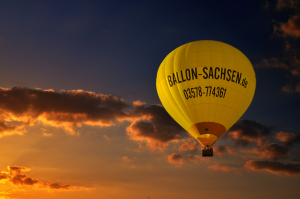- This topic is empty.
-
AuthorPosts
-
12/02/2025 at 11:09 #7107
When it comes to enhancing the aesthetic appeal and energy efficiency of a building, external wall cladding plays a pivotal role. However, the cost of cladding can often be a significant concern for homeowners and builders alike. In this post, we will explore the cheapest ways to clad an external wall without compromising on quality or durability.
Understanding External Wall Cladding
External wall cladding serves multiple purposes: it protects the structure from weather elements, improves insulation, and enhances the overall appearance of the building. The choice of cladding material can greatly influence both the initial investment and long-term maintenance costs. Therefore, selecting a cost-effective solution requires a thorough understanding of the available options.
1. Vinyl Siding: A Budget-Friendly Option
Vinyl siding is one of the most economical choices for external wall cladding. It is lightweight, easy to install, and requires minimal maintenance. The average cost of vinyl siding ranges from $2 to $7 per square foot, making it an attractive option for budget-conscious homeowners. Additionally, vinyl siding is available in a variety of colors and styles, allowing for customization without a hefty price tag.
Pros:
– Low installation costs
– Minimal maintenance required
– Variety of styles and colorsCons:
– Can be less durable than other materials
– May fade over time2. Wooden Cladding: A Natural and Affordable Choice
Wooden cladding, particularly when sourced from sustainable forests, can be a cost-effective and environmentally friendly option. The price of wooden cladding typically ranges from $3 to $10 per square foot, depending on the type of wood used. While it requires regular maintenance to prevent rot and insect damage, the natural aesthetic of wood can significantly enhance the value of a property.
Pros:
– Attractive natural appearance
– Good insulation properties
– Renewable resource when sourced sustainablyCons:
– Requires regular maintenance
– Vulnerable to pests and weather damage3. Fiber Cement Board: Durability Meets Affordability
Fiber cement board is another cost-effective cladding option that combines affordability with durability. Priced between $5 and $10 per square foot, fiber cement is resistant to fire, rot, and pests, making it a long-term investment. It can mimic the appearance of wood or stucco, providing versatility in design.
Pros:
– Highly durable and low maintenance
– Resistant to fire and pests
– Versatile design optionsCons:
– Heavier than other materials, which may increase installation costs
– Requires specialized tools for installation4. Metal Cladding: A Modern and Cost-Effective Solution
Metal cladding, particularly aluminum and steel, is gaining popularity due to its modern aesthetic and durability. The cost of metal cladding can vary widely, typically ranging from $5 to $15 per square foot. While the initial investment may be higher, metal cladding often requires less maintenance and can last for decades.
Pros:
– Long-lasting and low maintenance
– Modern and sleek appearance
– Resistant to weather and pestsCons:
– Higher initial cost compared to vinyl or wood
– Can be prone to dents and scratches5. Recycled Materials: Eco-Friendly and Economical
Using recycled materials for cladding can significantly reduce costs while promoting sustainability. Options such as reclaimed wood, recycled metal, or composite materials can be both affordable and environmentally friendly. The price will vary based on availability and sourcing, but the potential savings and environmental benefits are substantial.
Pros:
– Cost-effective and sustainable
– Unique aesthetic appeal
– Reduces landfill wasteCons:
– Availability may be limited
– May require more effort in sourcing and installationConclusion: Making the Right Choice
When considering the cheapest way to clad an external wall, it is essential to balance cost with durability, maintenance, and aesthetic appeal. Each material has its advantages and disadvantages, and the best choice will depend on individual preferences, local climate, and budget constraints. By carefully evaluating these factors, homeowners can achieve a cost-effective cladding solution that enhances their property’s value and longevity.
-
AuthorPosts
- You must be logged in to reply to this topic.



